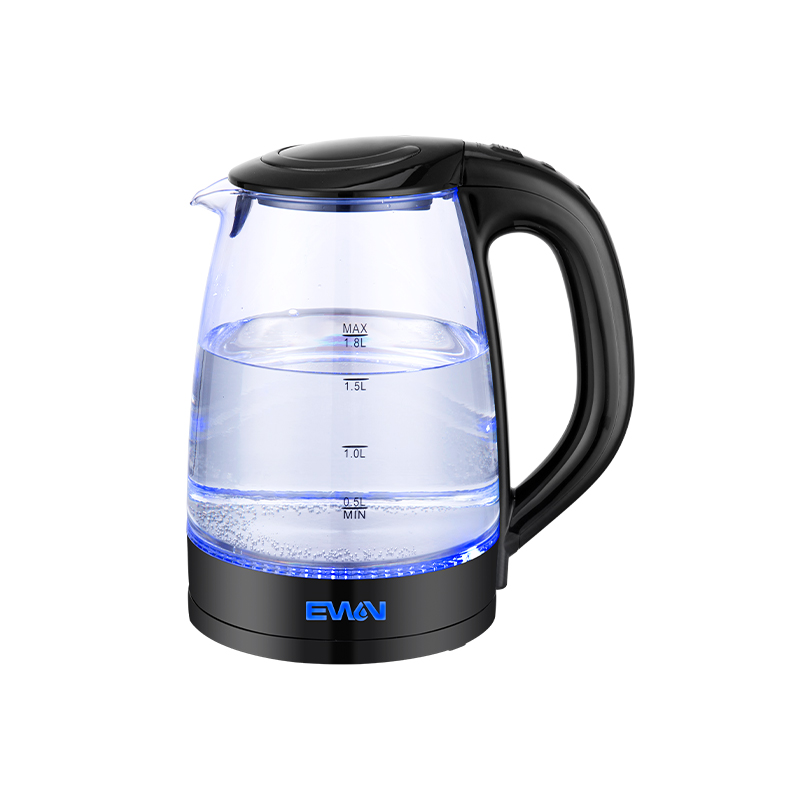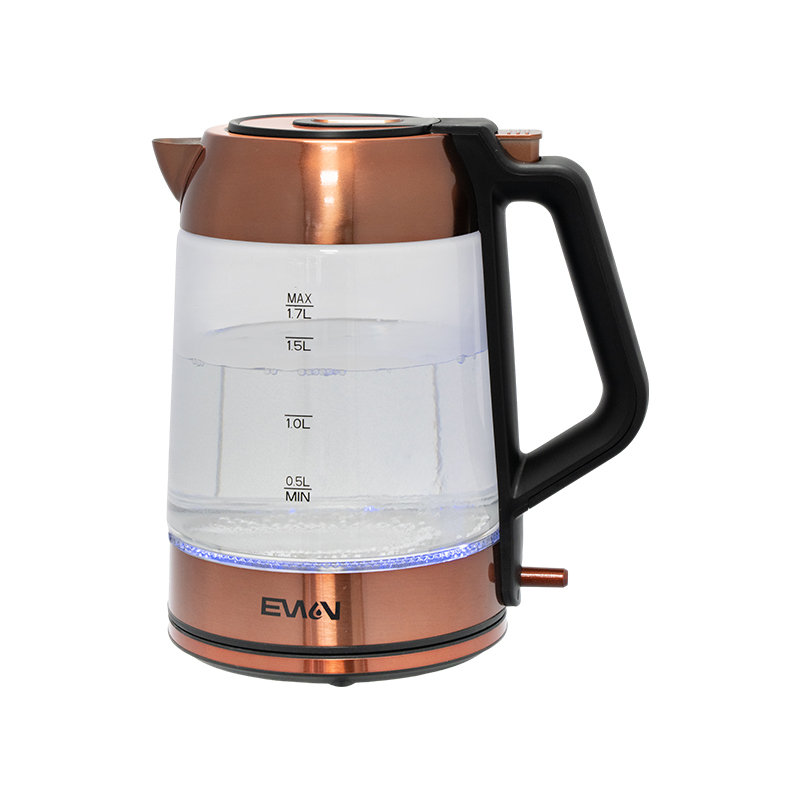+86-18667862027
Web Menu
Product Search
Exit Menu
Does the design of electric kettle take into account safety measures such as preventing scalding and preventing electric leakage?
Does the Design of Electric Kettles Take Into Account Safety Measures Such as Preventing Scalding and Preventing Electric Leakage?
The electric kettle has become an indispensable appliance in modern households due to its convenience and efficiency in boiling water quickly. However, as with any electrical appliance, safety is a primary concern, especially considering the combination of water and electricity. Electric kettles are typically designed to be user-friendly and efficient, but they must also incorporate a variety of safety features to ensure that they do not pose a risk to users. Two of the most important safety considerations in the design of electric kettles are preventing scalding and preventing electric leakage. In this article, we will explore how modern electric kettles are designed to address these concerns, focusing on the mechanisms in place to prevent scalding accidents and electric leakage issues.
Designing for Scalding Prevention
One of the primary risks associated with electric kettles is the potential for scalding. Boiling water can cause severe burns or injuries if users come into direct contact with hot surfaces or if the kettle tips over. As such, manufacturers design electric kettles with various features to minimize the risk of scalding accidents. These features are integrated into both the exterior and interior of the kettle to create a safer user experience.
Insulated Handles: The handle of an electric kettle is one of the most critical design elements in preventing scalding. In many kettles, the handles are made from heat-resistant materials such as plastic, rubber, or silicone. These materials are chosen for their ability to stay cool even when the kettle is filled with boiling water. This ensures that users can safely grip and pour the hot water without the risk of burns. Some kettles also feature ergonomic handles designed for a comfortable, secure grip, which can reduce the likelihood of accidents caused by slips or mishandling.
Double-Walled Construction: To further protect users from the heat, some electric kettles are designed with double-walled construction. The inner wall, which comes into contact with the boiling water, is typically made of stainless steel, while the outer wall is designed to remain cool to the touch. This double-wall design helps insulate the kettle, preventing excessive heat transfer to the outer surface. As a result, users can handle the kettle without fear of burning their hands or fingers. In some cases, the outer wall may even be coated with a heat-resistant material, providing an additional layer of protection.
Automatic Shut-Off Feature: Another common safety feature is the automatic shut-off function, which helps prevent the kettle from boiling dry. When the kettle detects that the water has reached a boil, it automatically turns off the heating element. This feature not only prevents the kettle from overheating, but it also eliminates the risk of a potential fire hazard if the kettle is left unattended. By ensuring that the kettle is turned off once the boiling process is complete, manufacturers help mitigate the risk of accidents related to scalding from prolonged contact with heated surfaces.
Preventing Electric Leakage
Electric leakage is another significant safety concern when it comes to electric kettles. If the electrical components of the kettle are compromised, there is a risk of electric shock, which could lead to injury or even death. To prevent electric leakage, manufacturers take great care in designing the electrical system of the kettle and incorporating safety features that protect users from electrical hazards.
Waterproof Electrical Components: One of the most important aspects of preventing electric leakage is the waterproofing of electrical components. Most modern electric kettles are designed with sealed electrical connections to prevent water from coming into contact with internal wiring or components. These seals are typically made of rubber or silicone, which are resistant to water ingress. By ensuring that no water can enter the electrical compartment, manufacturers reduce the risk of short circuits and electric shocks.
Grounding and Insulation: To further enhance safety, electric kettles are equipped with grounding systems and high-quality insulation. The grounding system ensures that any stray electrical currents are safely diverted to the ground, rather than through the user or other parts of the kettle. This grounding mechanism is especially important if there is any malfunction within the kettle’s electrical system. Insulation is also used to prevent the electrical components from becoming exposed to water or moisture. In addition, electrical wiring is typically routed through protective channels within the kettle’s housing, further minimizing the risk of electrical leakage.
Integrated Circuit Breakers: Many electric kettles are equipped with circuit breakers that automatically disconnect the power supply in the event of an electrical fault, such as a short circuit. This safety feature ensures that any electrical issues are detected and addressed before they can cause harm to the user. By cutting off the power supply, the circuit breaker helps prevent the risk of electric leakage and protects the user from potential electric shock.
Additional Safety Features in Electric Kettles
In addition to the measures taken to prevent scalding and electric leakage, there are several other safety features commonly found in modern electric kettles. These features aim to further improve the overall safety and usability of the appliance, reducing the likelihood of accidents and ensuring a more reliable user experience.
Anti-Slip Base: Many electric kettles are designed with an anti-slip base to prevent them from tipping over. This feature is particularly useful in preventing accidents that could result in hot water spilling out of the kettle, potentially causing burns or scalds. The anti-slip base typically consists of rubber or silicone, which provides a stable and secure footing on various surfaces. By keeping the kettle firmly in place, this feature minimizes the risk of spills and helps users handle the kettle with confidence.
Overheat Protection: In addition to the automatic shut-off feature, some electric kettles also include overheat protection mechanisms. These safety systems monitor the temperature inside the kettle and automatically turn off the heating element if the temperature exceeds a certain threshold. This is especially important in preventing overheating, which could lead to the kettle becoming damaged or even catching fire. Overheat protection helps ensure that the kettle operates within safe temperature limits, providing an added layer of security for the user.
Child Safety Locks: Another important feature that some electric kettles include is a child safety lock. This lock prevents children from accidentally turning on the kettle or opening the lid while it is in use. The safety lock ensures that the kettle can only be operated by an adult, reducing the risk of scalding or other accidents involving young children. The lock mechanism is typically easy for adults to use but difficult for children to disengage, providing peace of mind for families with young children in the home.
Compliance with Safety Standards
To ensure that electric kettles meet the required safety standards, manufacturers must comply with various regulatory guidelines and certifications. In many countries, electric kettles must meet specific safety standards set by regulatory bodies such as the International Electrotechnical Commission (IEC) and the Underwriters Laboratories (UL). These organizations establish safety requirements for electrical appliances, including guidelines for protection against electric shock, fire hazards, and overheating.
In addition to these international standards, manufacturers may also need to comply with national safety regulations depending on the market in which the kettle is sold. For example, in the European Union, electric kettles must comply with the Low Voltage Directive (LVD) and the Electromagnetic Compatibility Directive (EMC). These standards ensure that the kettles are safe for use and do not pose a risk to public health or safety.
address
No.935 Qiye Road, Zhouxiang Town, Cixi City, Zhejiang Province, China
Sale’s Email
leila@nbewin.com
sales8@nbewin.com
sales9@nbewin.com
Copyrighte Ningbo Ewin Electrical Appliances Co., Ltd. All Rights Reserved.












